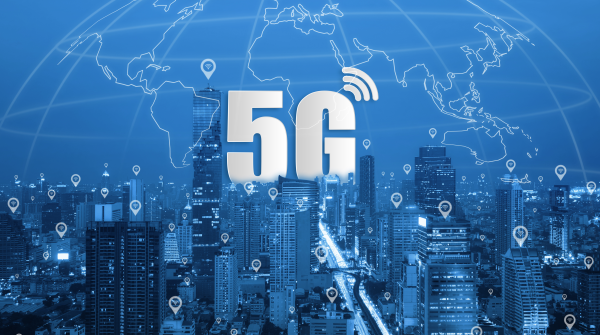What are the uses of 5G How does 5G work


5G is the present and the future, the next generation of mobile networks, and the "highway" of innovation and technological development. Medical, safety, leisure or mobility, all areas are improved by the power they provide.
More powerful, faster, and lower latency. It is these three characteristics that make fifth-generation mobile networks critical to building a more efficient and equitable future. Understanding what 5G is, what it's used for and how it works will help us understand current technological developments and what we can expect.
What is 5G
This fifth generation mobile network is actually an improved and enhanced version of the previous generation 4G network. Businesses and individuals can benefit from its efficiency as it has a thousand times the capacity that the infrastructure was able to provide in 2010. Also, its speed can reach 10gbs, and it reduces latency (time delay in network transmission). 4G offers 200 milliseconds to next-gen milliseconds, while 5G offers zero-latency perception.
These capabilities can connect more than 7 billion people and 7 trillion devices. Thanks to this powerful connection, other technologies such as big data or the Internet of Things have developed, and even the average time to create a connected service has been reduced from 90 hours to 90 minutes. In this way, companies can bring a wider range of services and applications that are safer and more cost-effective to more people and businesses.
In 2020, when the coronavirus health crisis hit the globe, countries were able to make progress because telecommunications enabled connectivity to ensure key aspects such as remote work and telemedicine. The pandemic has accelerated digital transformation, and it took only one year to complete what could have been transformed into something that took more than five years. The 5G network deployment process that has already begun has paved the way for this acceleration.
What is the purpose of 5G
The technology, which can support a growing number of connected devices, especially in large urban centers, helped a lot during the first months of the lockdown.
But what is the real purpose of 5G? Connected cars, smart cities, Industry 4.0, telemedicine, streaming broadcasting, eSports, etc. For example, the latest generation of mobile networks can provide solutions for the new mobility and planning needs of cities. Smart cities are developing across the board, aiming to improve the quality of life in urban centers and provide quality services in a sustainable and safe way. Elements such as connected cars, smart buildings, public space management or the use of natural resources in large cities are all being optimized in real time, among others that are already in operation.
The field of healthcare has expanded with telemedicine and has now expanded to more places, such as rural areas across the globe. In addition to being able to diagnose and even operate remotely, the use of other technologies such as big data makes it possible to provide fast and accurate diagnoses within minutes.
With the help of the Internet of Things, 5G has also revolutionized the industrial sector. Smart factories are now a reality. Machines are connected with each other and with people, which increases the safety of factories as the most dangerous tasks are machined, productivity is increased and adjusted in real time according to demand, and machine accidents are reduced as it enables the introduction of preventive schemes to avoid The failure brought down the machine and scattered the plant.
Work, education and leisure have also changed. Remote work has become commonplace. We can now stay in touch with colleagues or loved ones because connectivity blurs the lines of time and place. 5G networks will also enable live streaming of sporting events and performances, new ways to visit museums and travel to other worlds and other times, as well as virtual reality and artificial intelligence capabilities, among many possibilities.
How the next generation mobile network works
We've just seen what 5G is and what it's used for, but we can also see how it works. 5G networks minimize transmission power to optimize electromagnetic field levels and ensure the lowest power consumption of 5G devices for successful communications, saving up to 90 percent of energy.
4G networks transmit at frequencies between 800 and 1,800 megahertz, while 5G uses frequencies from 700 megahertz to 3.5 megahertz and relies on LTE networks, a wireless connection technology that also provides high speeds and stability.
To support this, through the use of massive MIMO antennas, a new, efficient and advanced radio architecture has been designed to help minimize 5G network transmissions and adapt to business demands. Among other things, this is possible because the antenna provides coverage only where it is needed.
The birth of 5G
5G networks enhance the capabilities of the previous generation of 4G/LTE. The fifth generation took its first steps in Brussels in 2018, the same year Telefonica started developing some important interconnection projects in different cities. With its powerful features, this innovative network has gradually improved communications and all the services that support these infrastructures, and now offers ultra-fast connections on more than 80% of Spain's territory. The aim is to improve the capabilities of 4G and, if necessary, turn off 4G to benefit the fifth generation.
To fully exploit the potential of this network, manufacturers of 5G terminal equipment and new equipment have been rolling out improvements to increase efficiency and enable access to the network. These devices ensure they meet exposure limits and are safe devices.
The fact that we've gone from connecting everyone else to connecting everything around us, wherever and whenever we are, basically encapsulates what 5G is and what it's for.